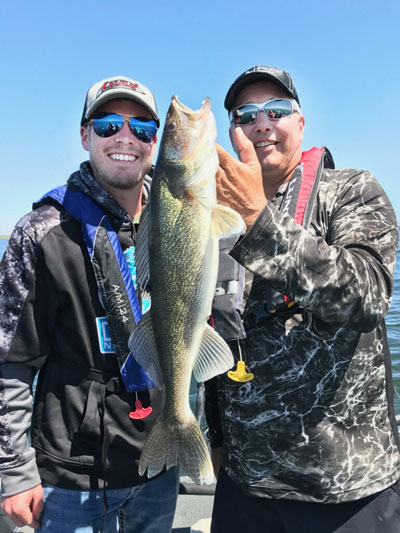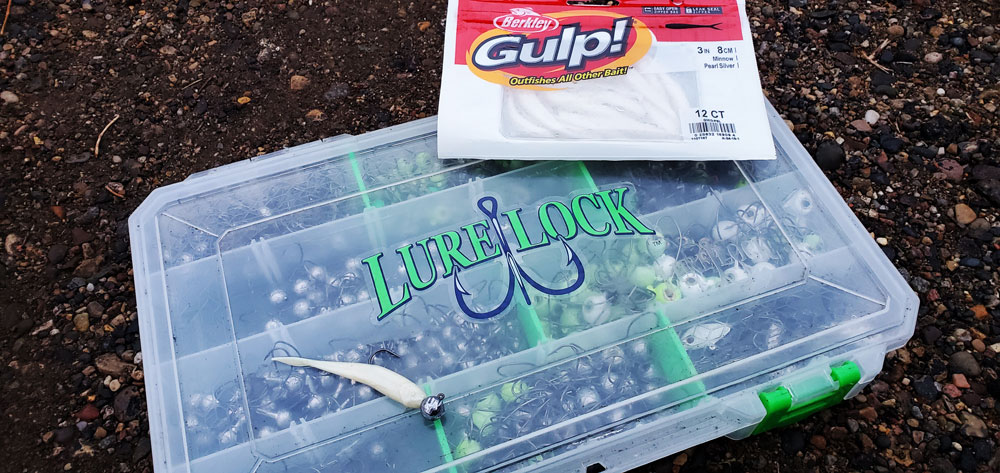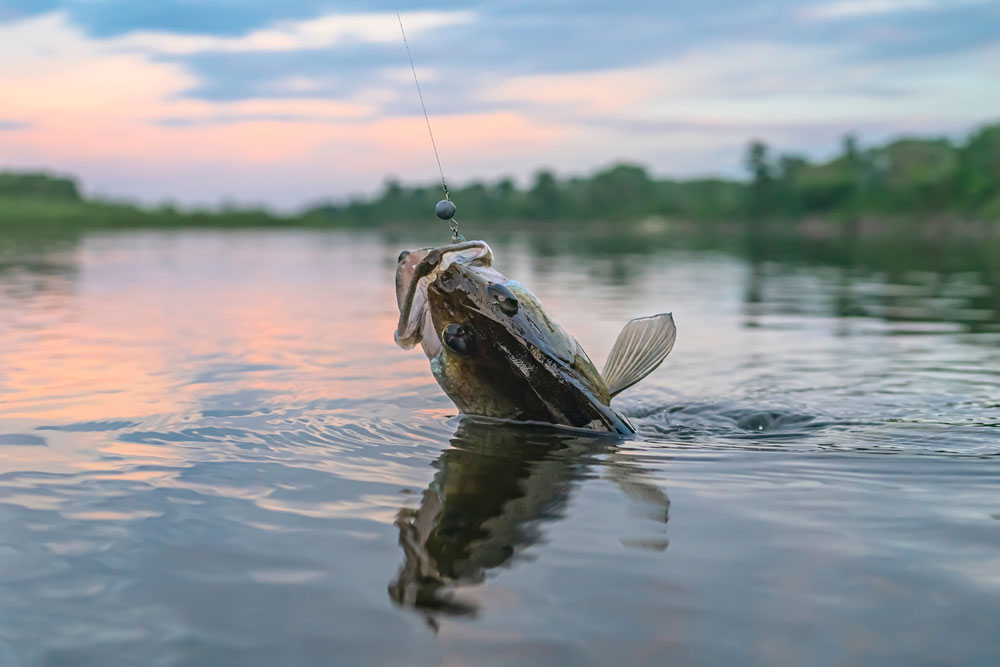provided by John E. Phillips
Mossy Oak Pro Johnnie Candle of Devils Lake, North Dakota, has been a tournament walleye fisherman for many years. When not tournament fishing, he guides on Devils Lake in North Dakota and several other lakes. To learn more, check out his website and his Facebook page.
 If you’re searching for a place to go and catch good numbers of walleyes and possibly the biggest walleye you’ve ever caught in November and December, my suggestions include the Missouri River, like Lake Sakakawea above the Garrison Dam in North Dakota, north of Bismarck. This lake was named for Sakakawea, the Native American Shoshone guide for the Lewis and Clark Expedition exploring the land of the Louisiana Territory.
If you’re searching for a place to go and catch good numbers of walleyes and possibly the biggest walleye you’ve ever caught in November and December, my suggestions include the Missouri River, like Lake Sakakawea above the Garrison Dam in North Dakota, north of Bismarck. This lake was named for Sakakawea, the Native American Shoshone guide for the Lewis and Clark Expedition exploring the land of the Louisiana Territory.
Two other great picks to fish for walleyes are the Lake of the Woods and the Rainey River that feeds the Lake of the Woods, both located in northern Minnesota, along the Canadian/U.S. border. But any lake or river that homes walleyes will be best during November and December in Wisconsin and Michigan, and all the way south to Iowa, Nebraska and Ohio – all states that provide incredible walleye fishing destinations at this time of the year.
If you’re fishing in a river, you will be looking for deep holes where the current is moving much slower than in the rest of the river. In the lakes and reservoirs, you’ll be searching for steep, rocky drop-offs to find good walleye fishing throughout the country at this time of the year on these kinds of places.
When fishing rivers in November to mid-December, at least 80 percent of the anglers will be vertical jigging where they pinpoint a portion of the river that’s holding walleyes in those deep holes in the bottoms. To fish these holes, you need to position your boat on the upstream end of the hole and try and match the speed of the current with your boat speed.
Drop a lead-headed jig with a plastic lure, a bucktail or even a big, fat, live minnow on it to the bottom. Bounce this jig along the bottom as your boat moves with the current. Make sure you tag the bottom as you drift through the hole. River walleyes during November and December usually will hold right on the bottom or a few inches off the bottom. You want your jig to remain in the walleye’s face as you drift down the river.
Sometimes the walleyes will move out of the holes in the bottoms and start feeding on the tops of the holes. So, if you locate walleyes above or on the sides of holes with your electronics, start casting and retrieving your jigs. Also look for eddy holes where the walleyes may be concentrating just off the current. If you pinpoint walleyes there, then cast up current, and work your jig right past that eddy hole with a soft-plastic jig. The walleyes will dart out of that current break and grab your jig. Then the fun begins.
I’m often asked if I only can pick one style of jig and one type of bait to put on that jig, what will I choose? My jig head will be a 3/8-ounce ball-shaped jig head. I don’t have a preferred brand of jig, because I make my own. I don’t paint the heads of my jigs. I make my own jigs because I like to choose the hooks I use in the jig heads. I like Eagle Claw TroKar hooks. I believe them to be the sharpest and the strongest hooks I can use. This isn’t a sponsor plug – I buy my own hooks. I don’t paint the jig heads because if you’re fishing where the walleyes live, you’ll lose a lot of jigs. Painting the heads requires too much wasted time.

I’ll use a 3-4 inch, pearl-white Berkley Gulp! minnow on the jig head. This split-tail type of minnow gives the plastic a lot of action. It slips through the current well and doesn’t get swept downstream because it’s not big and bulky. I believe that that scent and flavor produces well especially in cold-water rivers during the fall, winter and early spring.
I’ll usually have my reel spooled-up with 8-pound-test braided line either PowerPro Braid or Berkley Fireline. Both work really well for me. To the braided line, I’ll tie a 3-foot leader of 6-pound-test fluorocarbon. I like fluorocarbon because it’s more abrasion-resistant than the main line braid on my reel. When you’re banging a jig into rocks and dragging it over structure in a river, you don’t want to have to check the leader every time you put your jig in the water and reel it.
If I’m casting and retrieving to try to catch walleyes up on top of a hole or those holding in an eddy break, I’ll use a smaller jig head, because keeping a 3/8-ounce jig from sinking too fast and hanging in rocks to get a strike when you’re in shallower water isn’t practical. Behind my jig head, I’ll have a soft-plastic bait, like the Pro Swimmer, that’s manufactured by Big Bite Baits and private labelled for Sheels All Sports in 13 states. This paddle-tail type of soft plastic comes in several different sizes. I like the 3.8-inch size for this type of fishing. I’ll choose white with silver glitter for the most productive color. When the walleyes are shallow, I think that glitter in the bait shines and causes the walleyes to attack more often than other colors will.
My main line will be somewhat heavier. I’ll either fish 10- or 15-pound-test braided line and either a 10- or a 12-pound-test fluorocarbon leader. When I’m fishing shallow, that heavier line helps me move the walleyes away from cover faster than I can if I’m fishing a lighter line.

Johnnie Candle’s Microwaved Walleye:
Yes, microwave your walleye. The flavor is incredible. Put a few small pats of butter in the bottom of a glass baking dish, add minced garlic and a bit of onion, two fish fillets, salt and pepper. Takes about 2 minutes to cook, depending on your microwave. This is an incredible way to cook fish for use in Fish Tacos.






























